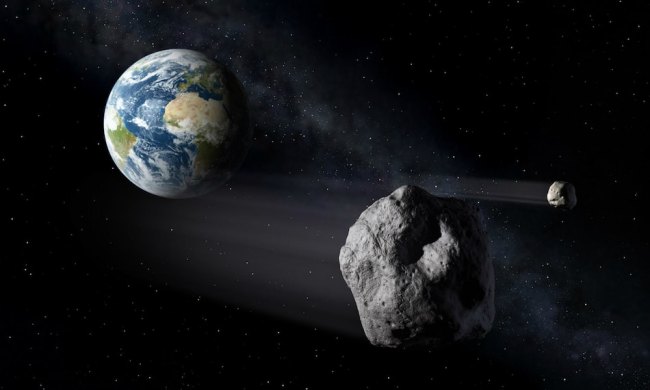NASA’s Lucy spacecraft is on its way to the orbit of Jupiter to study the asteroids there, called Trojans. Recently, while on its trip, it made a quick flyby of another small asteroid called Dinkinesh. The spacecraft confirmed its flyby of the asteroid this week, but when it returned the images it took, there was a surprise in store: a second, even smaller asteroid tucked up next to Dinkinesh.
Lucy took images using its Lucy Long-Range Reconnaissance Imager (L’LORRI) camera, which confirmed that the larger asteroid is around 0.5 miles across and the smaller asteroid is just 0.15 miles across. As the spacecraft approached Dinkinesh, the Lucy team had wondered if it might be part of a pair, called a binary system, because of the way its brightness changed over time. When the spacecraft flew by and snapped its images, this speculation was confirmed.

The pair are similar to the asteroid binary that NASA deliberately crashed a spacecraft into last year for the DART mission, according to the team.
“We knew this was going to be the smallest main belt asteroid ever seen up close,” said Keith Noll, Lucy project scientist from NASA’s Goddard Space Flight Center, in a statement. “The fact that it is two makes it even more exciting. In some ways, these asteroids look similar to the near-Earth asteroid binary Didymos and Dimorphos that DART saw, but there are some really interesting differences that we will be investigating.”
As well as being a first opportunity to study these asteroids, the flyby was also used as a test of Lucy’s ability to lock onto an asteroid and point its instruments at the target.
“This is an awesome series of images. They indicate that the terminal tracking system worked as intended, even when the universe presented us with a more difficult target than we expected,” said Tom Kennedy, guidance and navigation engineer at Lockheed Martin. “It’s one thing to simulate, test, and practice. It’s another thing entirely to see it actually happen.”
Dinkinesh means “marvelous” in Amharic, an Ethiopian language, and it was chosen because it is the Ethiopian name for the human ancestor fossil Lucy that the mission is named after.
“Dinkinesh really did live up to its name; this is marvelous,” said Hal Levison of the Southwest Research Institute, who is the principal investigator for Lucy. “When Lucy was originally selected for flight, we planned to fly by seven asteroids. With the addition of Dinkinesh, two Trojan moons, and now this satellite, we’ve turned it up to 11.”



